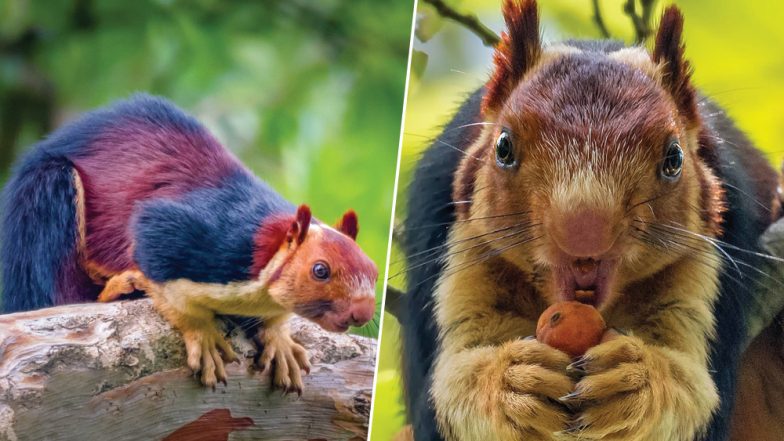

Squirrels probably obtained minerals and nitrogen from both fruit (especially seeds) and non-fruit sources (mature leaves and bark in the case of minerals, young and mature leaves in the case of nitrogen).

Squirrels consumed ephemeral food items opportunistically and non-ephemeral items such as mature leaves and bark on a regular daily basis.

There was also intra-month variation between individual squirrels in daily biomass of food consumed. This is perhaps a result of the higher water content and the lower content of some soluble nutrients within fruit at Bhimashankar relative to Magod. At Bhimashankar, daily biomass consumption increased with the proportion of fruit in the diet while this did not occur at Magod. There was seasonal variation in daily biomass consumption. Protein content, relative to digestibility reducers, influenced food item consumption only at Bhimashankar. Tannins, some alkaloids, and other secondary metabolites may negatively influence food choice. The intake rates of water and more digestible nutrients such as nonstructural carbohydrates, as well as the intake rate of minerals such as zinc (at Magod), were significant positive predictors of the relative contribution of an item to the daily diet, thus indicating considerations of feeding costs versus benefits. Water content was a significant positive predictor of relative food item consumption while mineral contents in general had the opposite effect. The daily consumption of food items (percent wet diet) and the intake rates of these items and the contained nutrients (wet g s -1) were determined by continuous observation of focal animals. The effect of nutrients and their availability on the diet of the herbivorous Malabar giant squirrel Ratufa indica (Sciuridae) was investigated at Magod and Bhimashankar in western India.


 0 kommentar(er)
0 kommentar(er)
